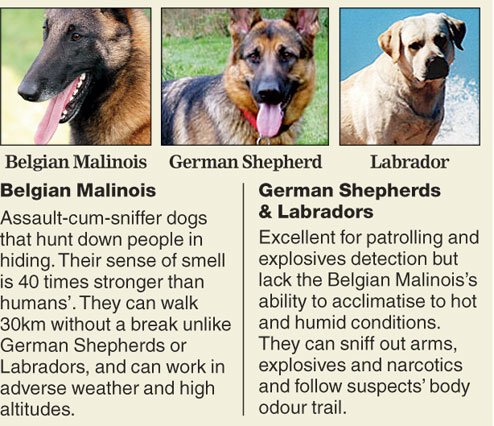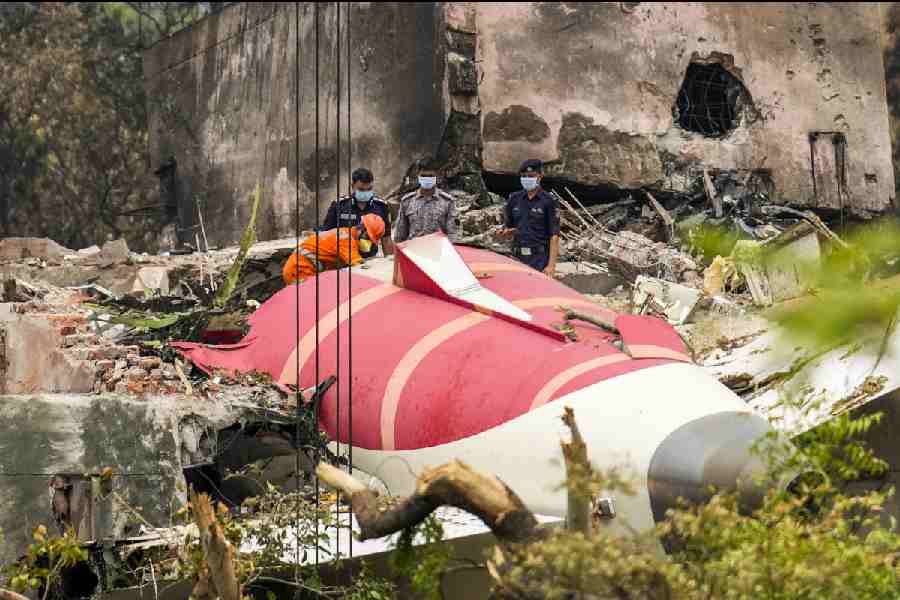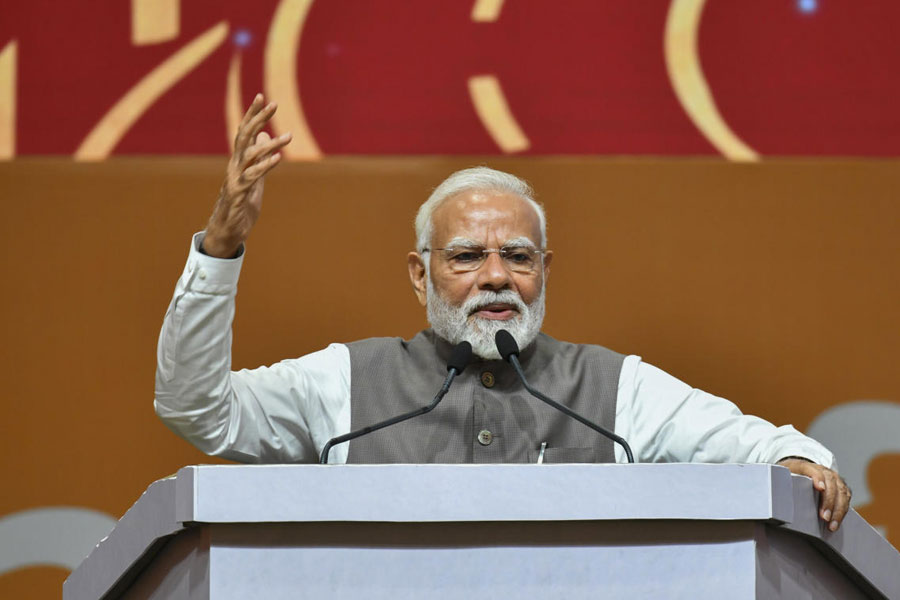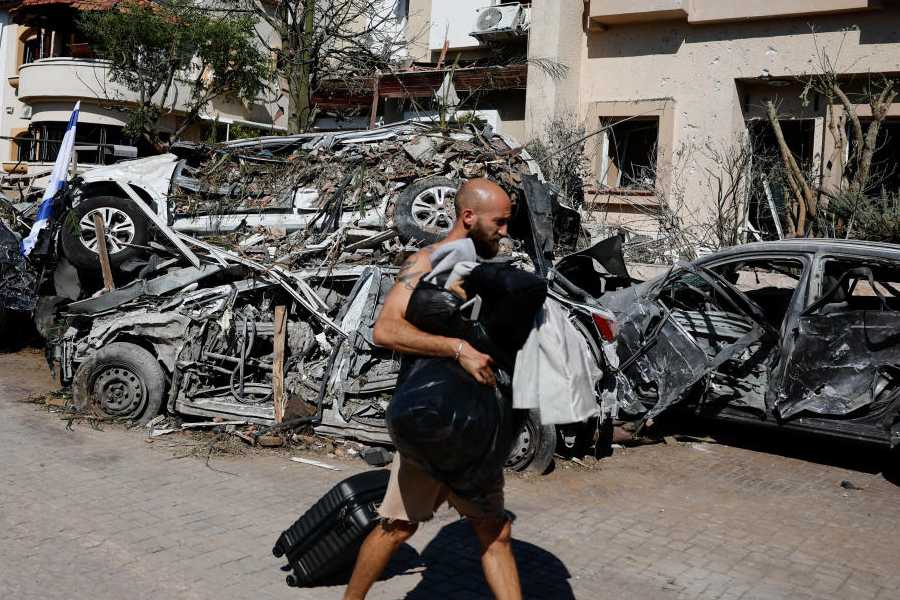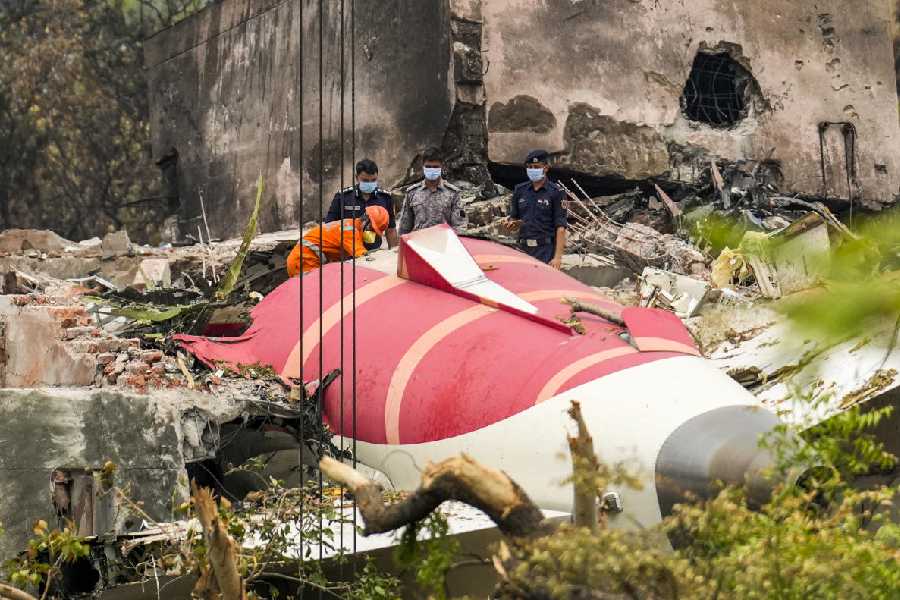
New Delhi, Sept. 10: Gypsy, Gunner, Tank and Pluto can look forward to comfortable living, once they retire in a few months, at an old-age home for army dogs the government opened recently.
A little over a year ago, they would have been shot or administered euthanasia, which used to be the fate of all army and paramilitary dogs following retirement or incapacitation through injury or illness, unless they had won gallantry awards.
'From now on, all service dogs will continue to receive the love and care they deserve even after retirement,' a senior army officer said. 'We also plan to auction some of them off, or allow them to be adopted by their handlers, who have an emotional attachment to them and will not mind the expenses.'
He added: 'Not all military dogs can be auctioned, though. For instance, the assault dogs that help with counter-insurgency operations cannot be placed in homes with children.'
Sources said the old-age home was set up a few months ago at the war dog training school in Meerut after Delhi High Court, hearing a plea from NGOs, last year directed the defence ministry to formulate a policy to rehabilitate retired dogs.
Between the court order and the establishment of the Meerut home, all retired dogs were given away to their handlers - as is being done also by the paramilitary forces, which have yet to set up old-age homes for their dogs.
Army dogs usually retire at the age of seven or eight, which is about half their life span of 13-15. Apart from participating in assault, their tasks range from 'routine patrol and protection to explosives detection and search and rescue', an officer said.
The army has over 1,000 trained dogs, mostly Labradors, German Shepherds and the Belgian Malinois - breeds that have a natural ability to adapt to training schedules and perform the tasks required of them.
An officer said: 'Which breed is used for which tasks depends on the altitude and the weather.'
He said that service dogs would now be killed only 'when advised as the last recourse' because of medical or behavioural conditions.
In America and Britain, military dogs are either put up at old-age homes or adopted, mostly by their handlers or other serving or retired military officers.
So far, the only force to auction retired service dogs in India has been the National Security Guard, an elite counter-terror wing.
'We auctioned them through a proper advertisement process,' NSG spokesperson Rakesh Kumar said.
Dogs that have won gallantry awards, bestowed for 'individual acts of exceptional devotion to duty or courage', have always been looked after well following retirement, though.
Rocky, a Belgian Malinois that had helped the Pathankot anti-terror operation in January 2016, was recommended for the Sena Medal last year.
Award-winning dogs are paid between Rs 15,000 and Rs 20,000 a month, which is spent on their food and medical expenses. The decorated dogs continue to receive their salaries after retirement.
The army's dogs from the Remount and Veterinary Corps Centre and School, Meerut, and their trainers have won one Shaurya Chakra, six Sena Medals and nearly 600 commendation cards from the chief, vice-chief and commanders. The dogs are integral to counter-terror operations in Jammu and Kashmir and the Northeast.

